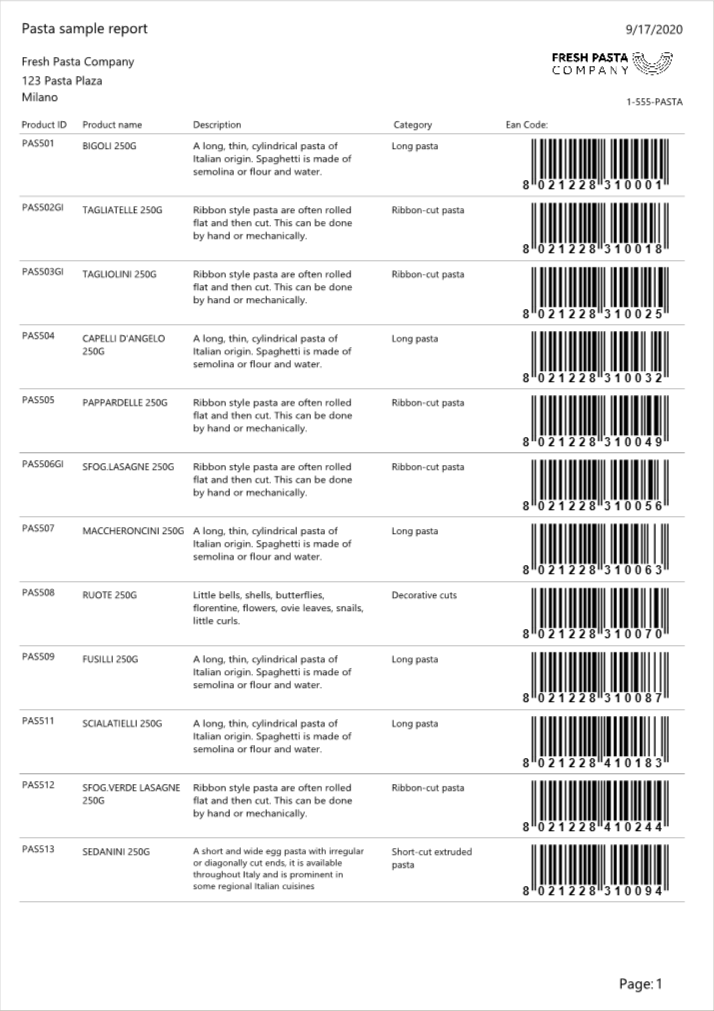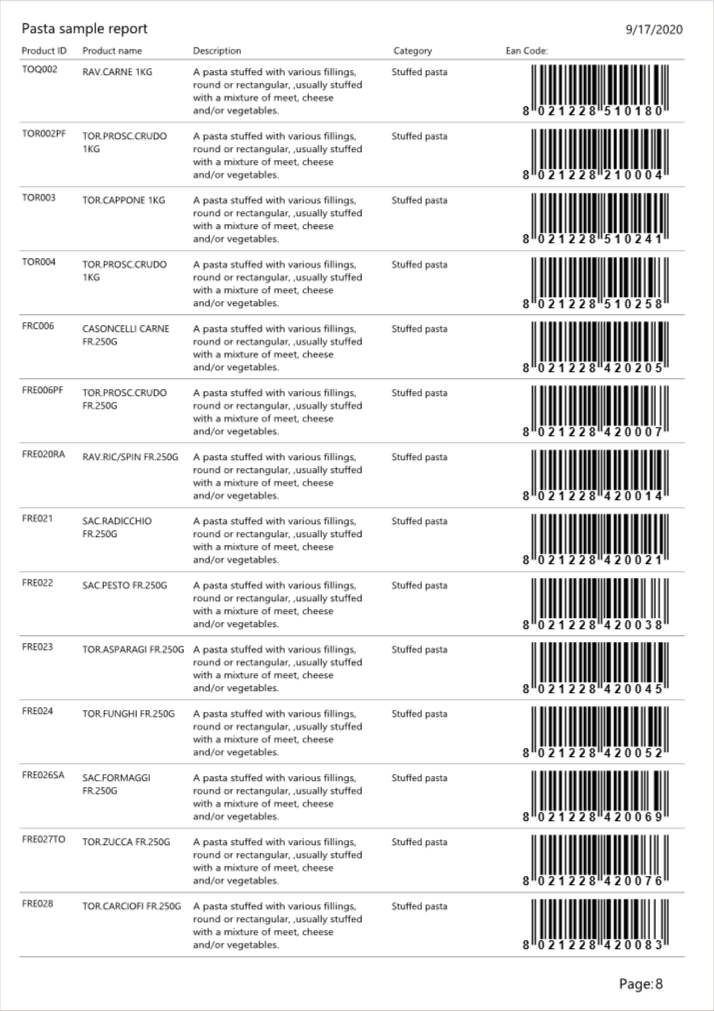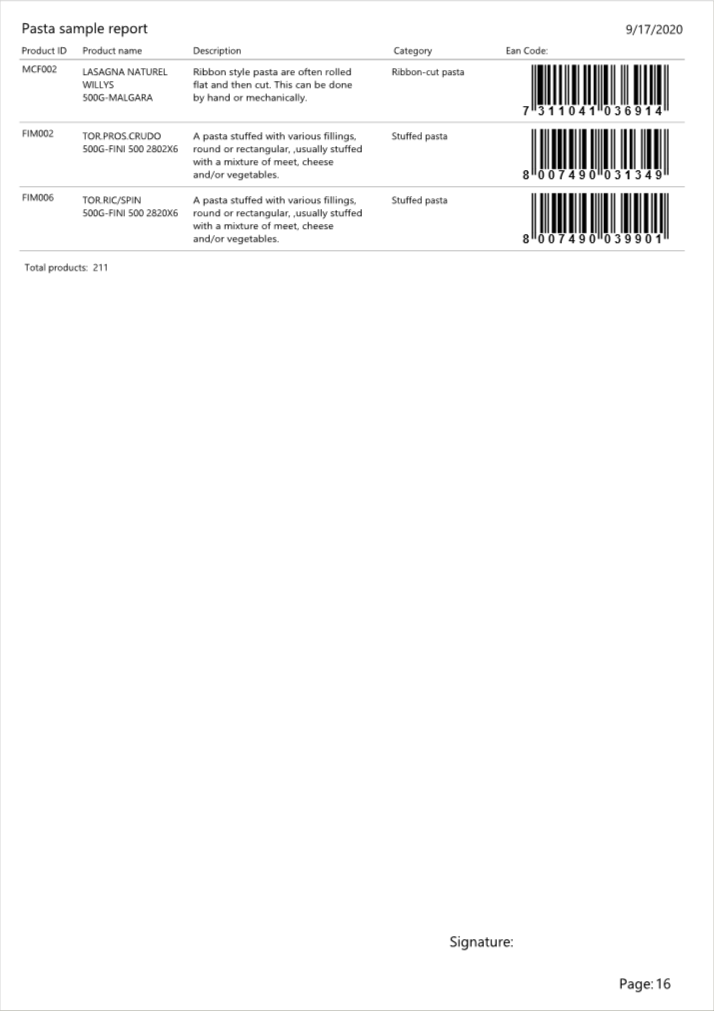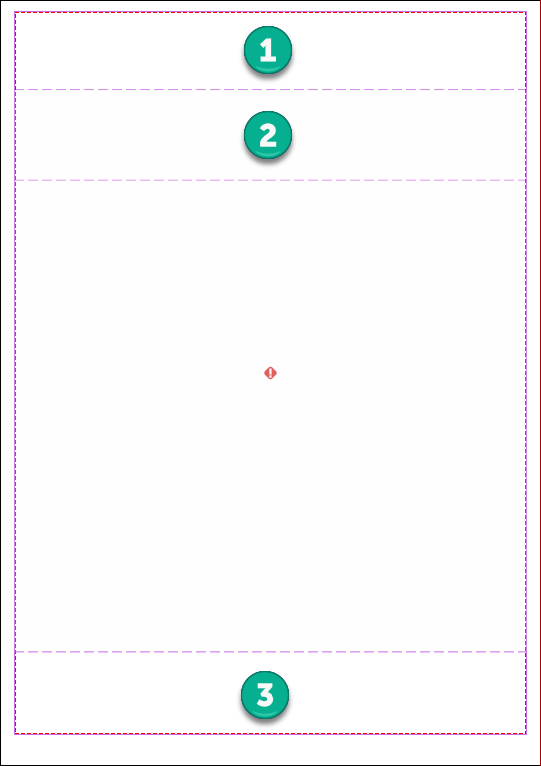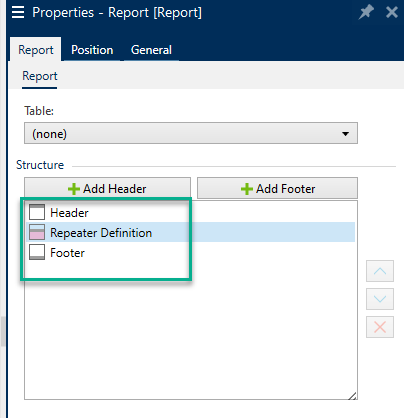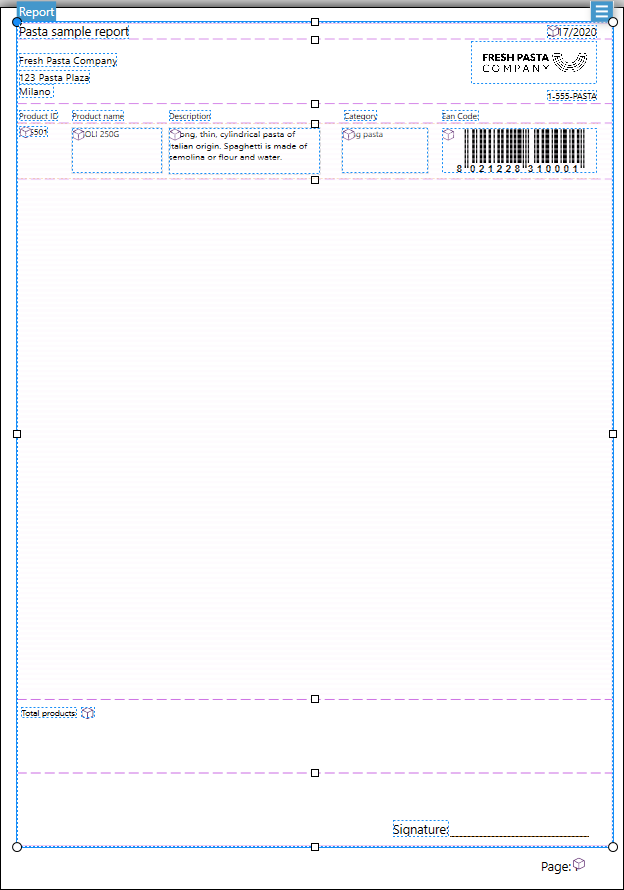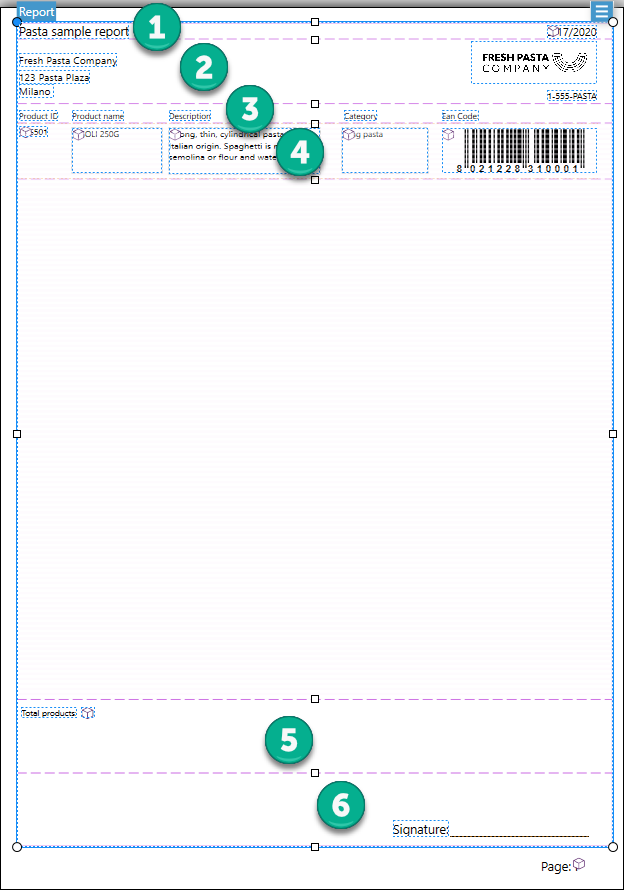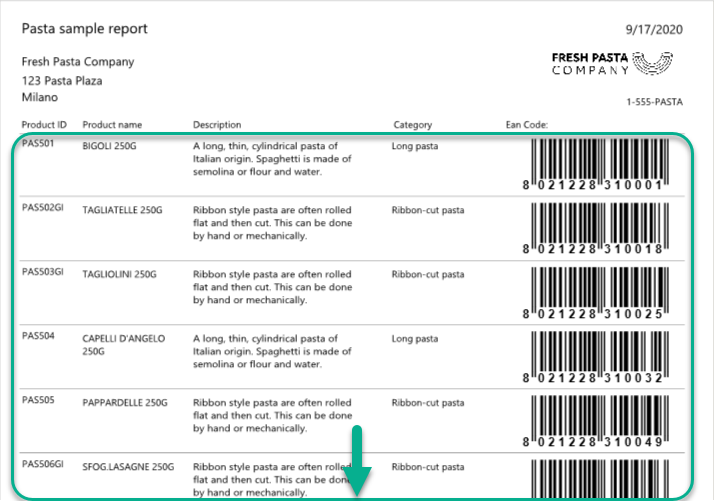Reports
Printing reports with Desktop Designer completes your labeling and shipping cycle, helping you go from product labeling to shipment with the same software. You can print reports from within Desktop Designer without the need for third party applications. Report printing avoids the cost of having to learn, develop, and maintain third party applications just to print your reports.
Reports are labels that display database data as custom tables. Report printing organizes your data into rows. You can add headers and footers to explain more information about your data.
For example, you can create packing lists that accompany shipments from your warehouse:
First page |
Middle page |
Last page |
Designing custom reports in Desktop Designer helps you make shipments faster with fewer mistakes.
Report elements
Most reports have similar structures. You can include:
Repeating data from your database. Repeating data appears on every page of your report.
Headers and footers to explain the repeating data or give more information. Headers and footers can repeat on some or all pages.
Report objects in Designer include 3 default elements:
|
|
Header Repeater Definition (template for all repeating data). Changes the look and behavior of all repeating data in every row of your report.
Footer
Add additional headers and footers to Report objects to build custom reports. For example, this packing list contains multiple elements:
|
|
Header for report name and date.
Header for logo and contact information. This header appears on the first page of your report.
Header for column descriptions for your data. Column descriptions repeat on every page so your data is readable.
Repeater Definition for repeating data. This is your report data that can repeat on multiple pages.
Footer for report totals. This footer appears on the last page of your report.
Footer for signatures. This footer is pinned to the bottom of the last page of your report.
Creating new reports
Make a new label (Usually A4 or Letter size so your reports can print on office printers).
Note
If you are using Header or Tail labels, you can create your report only on your main label. Header and Tail labels do not support Report objects.
Click and drag a Report object to your design surface.
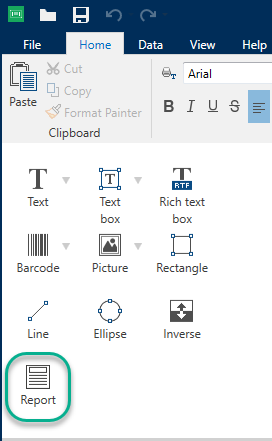
Resize your Report object until it fills most of your design surface. Report objects can be any size smaller than your design surface.
Tip
Leave room for objects like page numbers which you must place outside Report objects on your design surface.
Connect your database. Reports require database connections to function properly.
Open your Report object Properties (Right click > Properties or press F4) and click Report.
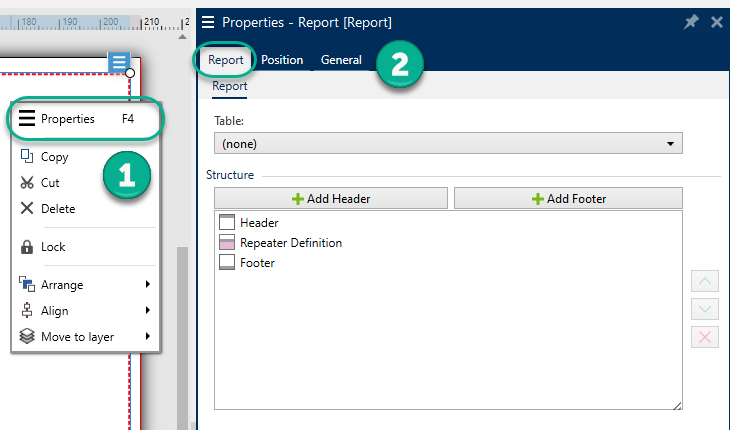
Go to Table and use the drop-down list to add your existing database, or use the Database wizard.
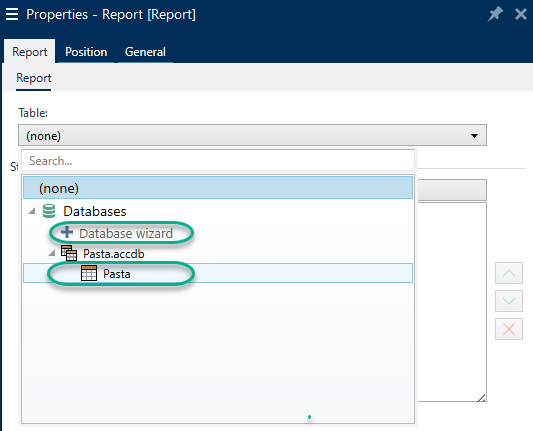
Your database is connected.
Your new report is ready to design.
Adding objects to reports
Drag and drop objects where you need them in your Report headers, Repeater Definitions, and footers.
Click and drag new objects into your elements:

Moving new objects into report elements.
Click and drag existing objects to move them between elements:
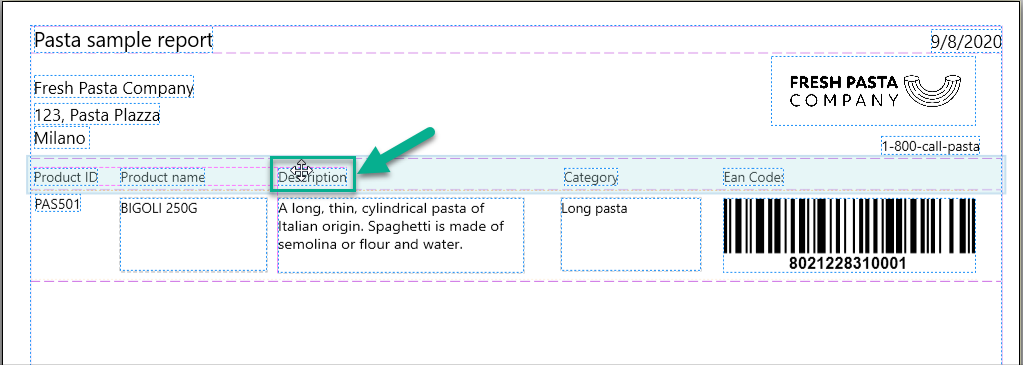
Moving objects between elements. Blue backgrounds appear to help you place objects.
Keep your Objects panel open (on your left) so you can always see which of your objects are in which elements:
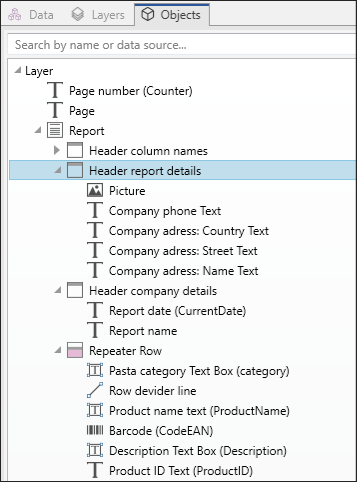
Configuring Repeater Definitions
Your Repeater Definition works with the database you connect to your report as a template for how your data displays. Reports create new lines for each record in your database. Connect objects in your Repeater Definition to database fields connected to your report. Repeater Definition formatting applies to every repeating line in your report.
Configuring your Repeater Definition. |
Repeater Definitions affect every repeating line of printed reports. |
Adding headers and footers
Make multiple headers or footers to add more information to your reports. You can configure your headers and footers to repeat on the first, last, or every page of your reports.
To add headers or footers:
Open Report Properties (right click > Properties or press F4).
Go to Structure and click Add Header or Add Footer. Your new element appears in your Structure.
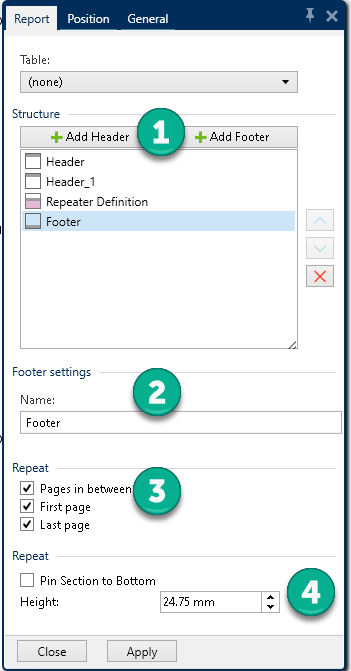
Add headers and footers to Structure.
Name your headers and footers. Naming your headers and footers make them easy to organize in your Objects panel.
Choose repeat options to control where headers and footers appear in your reports.
Set header and footer height.
Pin Section to Bottom (Footers only). Enable to always have your footer appear at the bottom of pages where it repeats. Useful for footers that contain text objects like signatures.
For example, if your repeating data ends in the middle of your last page, you can pin your signature footer to the bottom of your last page and leave the remaining half page blank. Unchecked, your signature footer prints immediately after your repeating data ends on your page.
Adding dynamic objects to headers and footers
You can add objects containing dynamic data (like variables and functions) to your report headers and footers. Variables and repeaters in headers, footers, or outside your Report objects iterate once per label/page. Your Repeater Definition iterates once per row.
To add dynamic data from databases to headers and footers, you cannot use the same database table you use in your Repeater Definition. Create a new database table (or new database connection) for your header and footer objects and make sure you enable Use the same record for entire print job in your second database table configuration.
For example, you can add an object showing your total report records from your second database table (Custom SQL here):
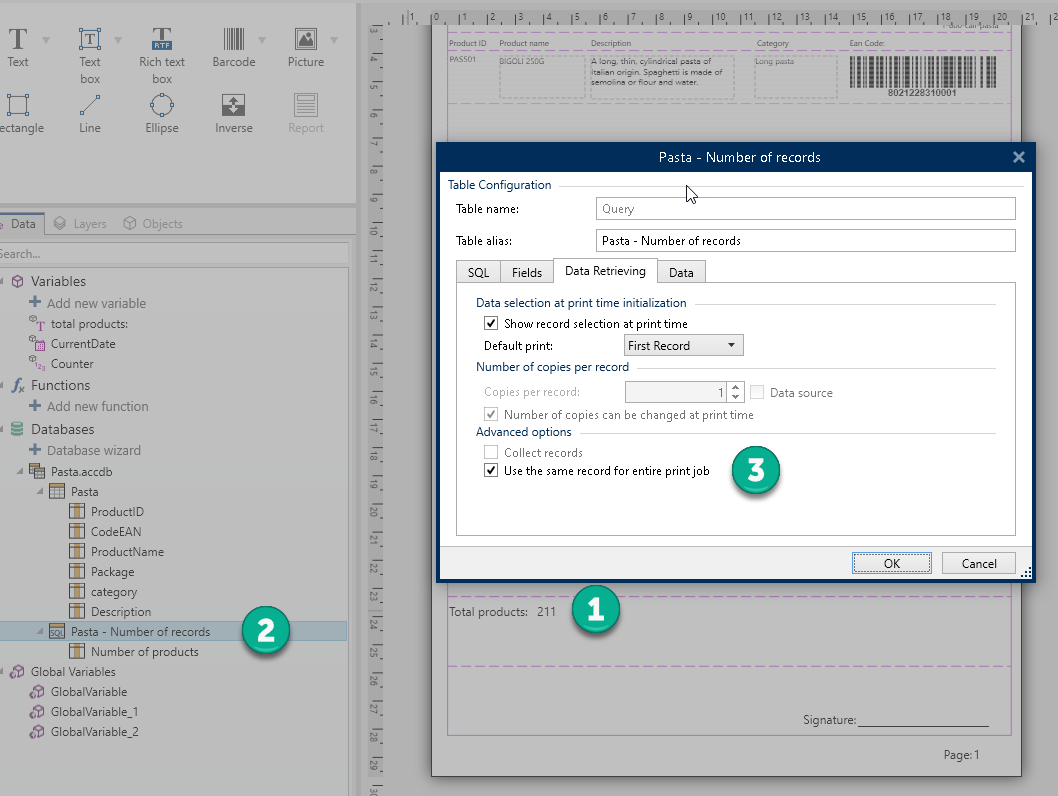
Add a dynamic Text object to your footer showing your total number of report records.
Connect your Text object to a database.
Enable Use the same record for the entire print job to configure your database table. Required.
Adding page numbers

Adding page numbers with counters on reports.
Warning
Page numbering with counters only includes your current page. For example, Page 1.
You cannot include total page counts. For example, Page 1 of 5 is not supported.
Most reports use page numbers. To add page numbers to your reports:
Create a Text object with a Counter variable.
Place your Counter outside your report object on your design surface. Adding counters in headers and footers disrupts your total page count.
